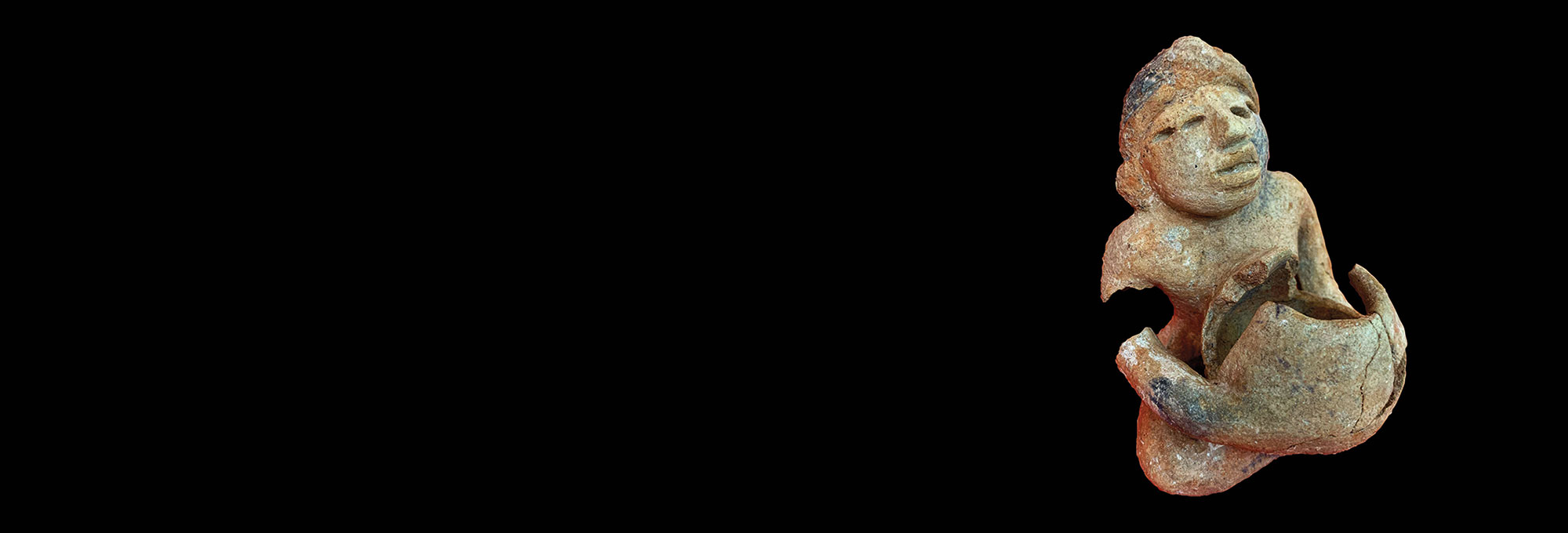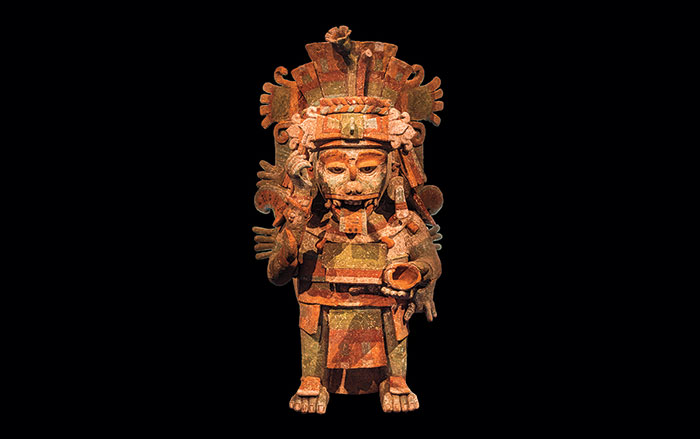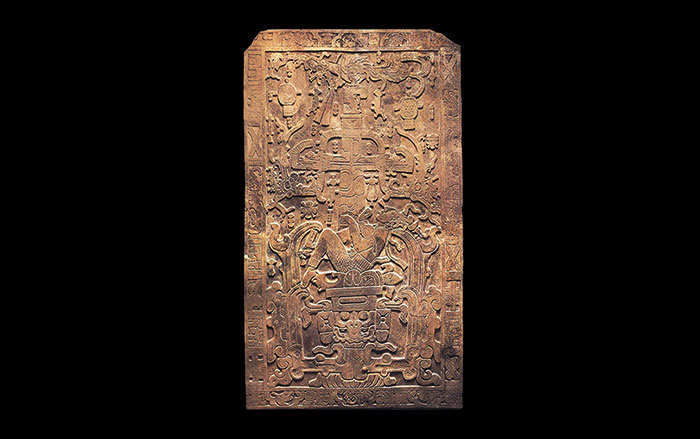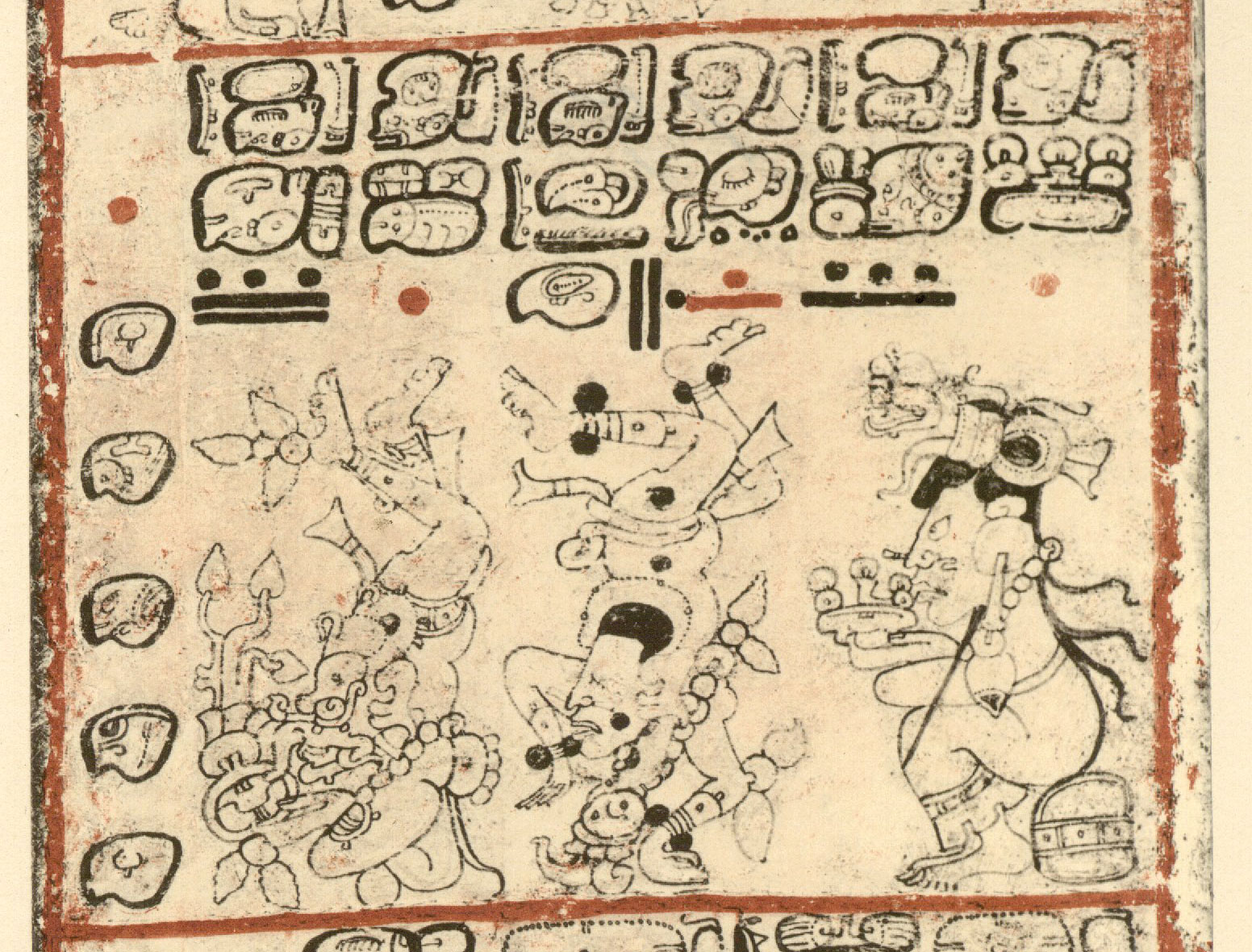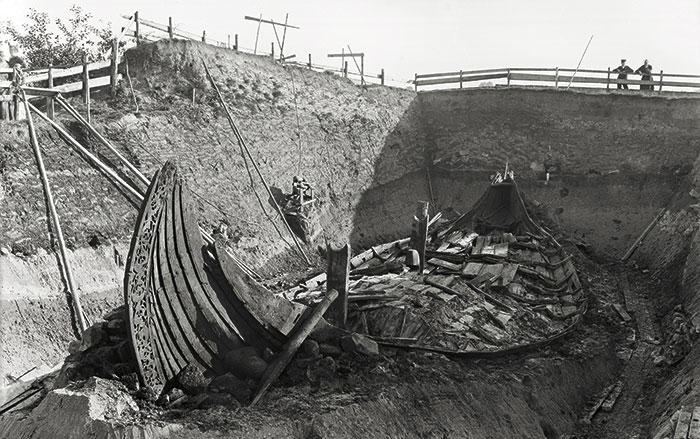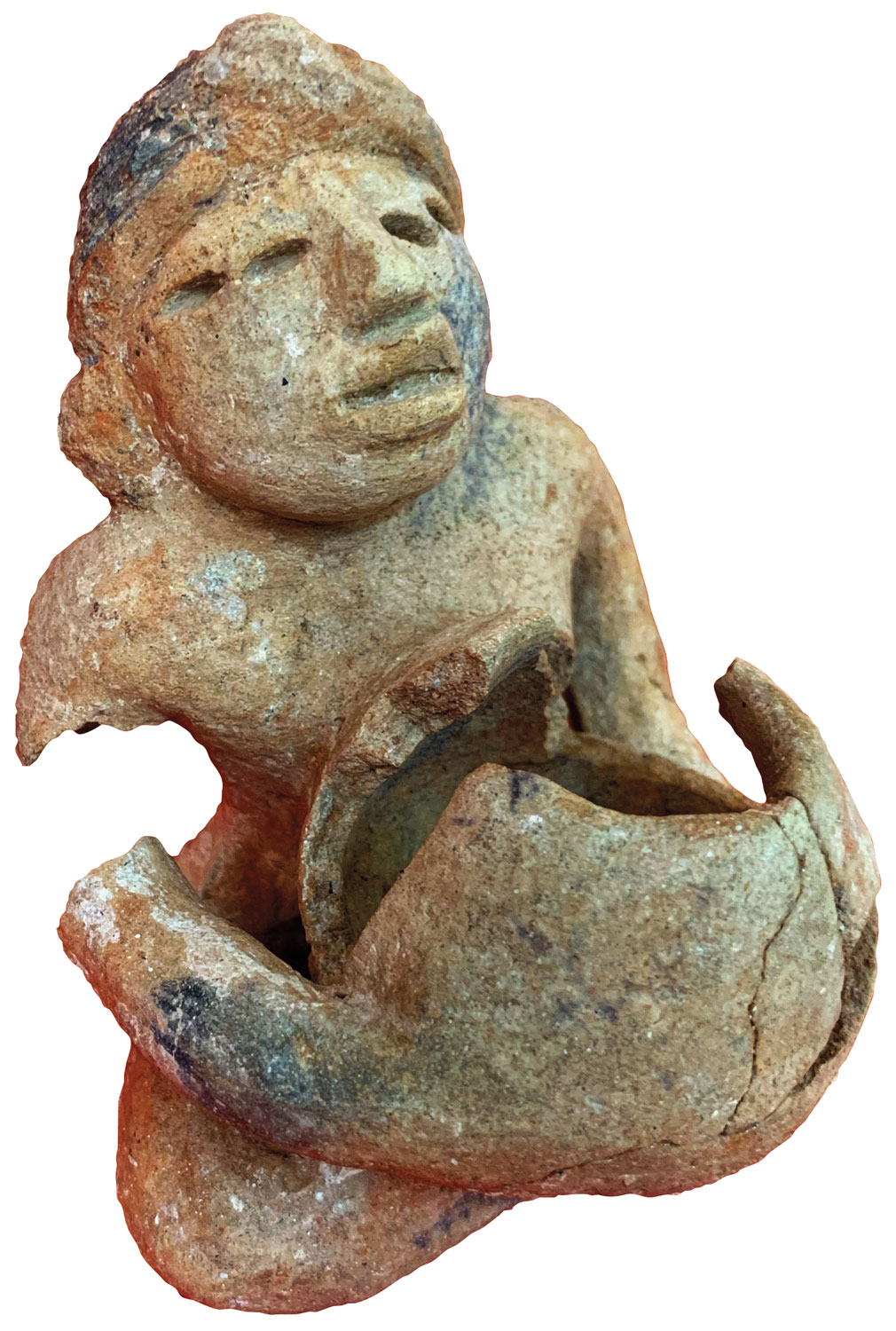
What is it?
Figurine
Material
Ceramic
Culture
Maya
Date
Middle Preclassic period,
ca. 700–500 b.c.
Dimensions
5 inches tall
Found
Xanab Chak, Mexico
Human eyes are as individual as fingerprints. Like those of a living person, the eyes of this ceramic figurine discovered recently at the site of Xanab Chak in the Puuc region of Mexico’s Yucatán Peninsula are unique. The figurine is the only one to have been found at the site, and indeed the only Preclassic example ever found in the Puuc region. Although it shares some similarities with examples from southern Maya sites in Belize and Guatemala, including a lack of genitalia, a mouth with parted lips and a slight snarl, and a flat back, its eyes are highly unusual.
“At first we thought the figurine had four eyes,” says archaeologist Ken Seligson of California State University, Dominguez Hills. “That seemed really strange.” Eventually Seligson and his team discerned that the whites and pupils of the figure’s eyes are represented in a highly stylized manner. In combination with the bowl the figure is holding—a kind of vessel resembling a bottle gourd that was produced in the Puuc region—the eyes suggested to Seligson that the figurine had been made locally, because they differ so greatly from the more realistic way that eyes are rendered in the southern Maya region.
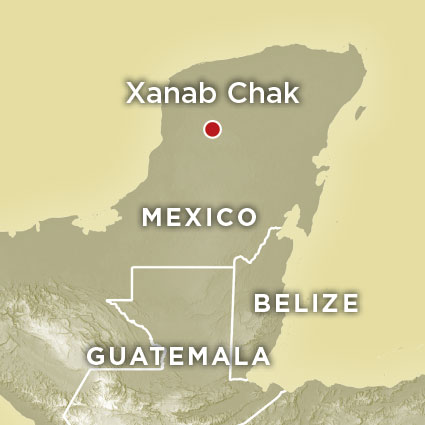
This realization—that the figurine probably wasn’t acquired through trade, but that a local artist in Xanab Chak might have created it—was unexpected. The village was first settled in about 1000 b.c. and was likely one of the earliest agricultural communities in the region. Until recently, scholars believed it was a cultural backwater disconnected from early Maya sites to the south, but the figurine provides evidence to the contrary. “Someone had probably gone to Guatemala and seen that they were making figurines and carried that technology back with them, but made it their own,” says Seligson. “It surprised us that a tiny agricultural village like Xanab Chak was plugged into wide-ranging networks so early on in the Maya period.”


